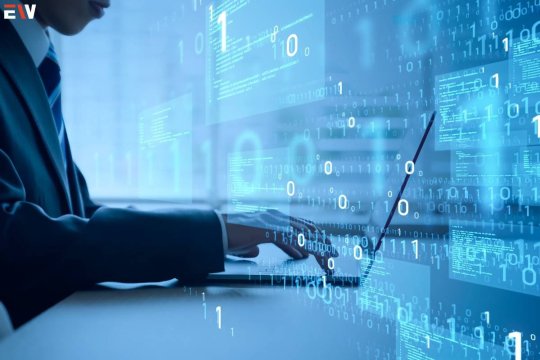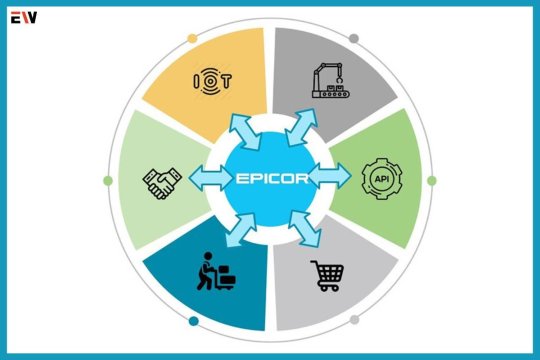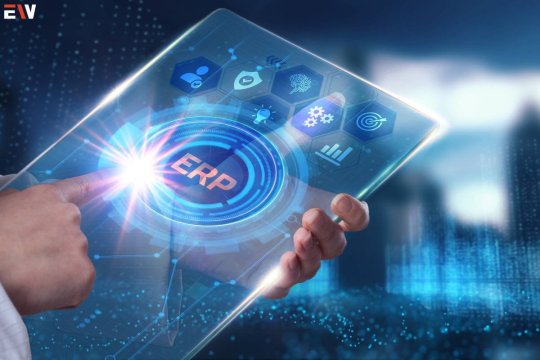#Sap Predictive Analytics
Explore tagged Tumblr posts
Text
Aretove Technologies specializes in data science consulting and predictive analytics, particularly in healthcare. We harness advanced data analytics to optimize patient care, operational efficiency, and strategic decision-making. Our tailored solutions empower healthcare providers to leverage data for improved outcomes and cost-effectiveness. Trust Aretove Technologies for cutting-edge predictive analytics and data-driven insights that transform healthcare delivery.
#Data Science Consulting#Predictive Analytics in Healthcare#Sap Predictive Analytics#Ai Predictive Analytics#Data Engineering Consulting Firms#Power Bi Predictive Analytics#Data Engineering Consulting#Data Engineering Aws#Data Engineering Company#Predictive and Prescriptive Analytics#Data Science and Analytics Consulting
0 notes
Text
Streamline your financial planning with SAP BPC and Group Reporting solutions! We, at INK IT Solutions, offer an enhanced platform to develop, integrate, and extend SAP services and applications. For more information, you can visit our website https://inkitsolutions.com/ or call us at 9891663202
0 notes
Text
youtube
Discover how the world’s top companies are leveraging Business Intelligence (BI) to stay ahead of the competition! In this video, we break down the strategies and tools used by giants like Google, Amazon, Apple, and more to optimize operations, enhance customer experience, and drive innovation. From real-time data analysis to predictive analytics, these companies are transforming the way business is done.
Whether you’re a business owner, a data enthusiast, or just curious about how big brands like Netflix and Tesla use BI to gain a competitive edge, this video is a must-watch. Learn how Business Intelligence tools like Tableau, Microsoft Power BI, and SAP BusinessObjects are being used to make smarter decisions, predict customer behavior, and streamline operations.
Visit Our Webiste: https://vuelitics.com/
#businessintelligence#data analytics#businessstrategy#data strategy#data visualization#business analytics#advance data solution#howcompanyusebi#datainsights#business analysis techniques#top artificial intelligence companies#Business Intelligence#BI tools#predictive analytics#top companies using BI#Google BI strategy#Amazon BI tools#Microsoft Power BI#SAP BusinessObjects#Tableau#Netflix data analytics#how companies use BI#business intelligence strategies#real-time data analysis#supply chain optimization#customer experience enhancement#data-driven decision making.#business analyst#microsoft 365#microsoft power bi
0 notes
Text
0 notes
Text
Exploring the Power of Predictive Analytics in SAP Analytics Cloud
The ability to foresee future trends and make proactive decisions is more valuable than ever. Predictive analytics serves as the compass that guides organizations towards data-driven decision-making. SAP Analytics Cloud, a leading cloud-based analytics platform, offers a rich suite of features that empowers users to harness the power of predictive analytics. In this blog, we'll take a deep dive into the world of predictive analytics in SAP Analytics Cloud, exploring its key features and how it can revolutionize your data analysis.

Unleashing the Potential of Predictive Analytics
Predictive analytics is a field of data analysis that goes beyond traditional reporting and descriptive analytics. It's all about forecasting future trends, identifying patterns, and making informed decisions based on historical data. In SAP Analytics Cloud, predictive analytics opens the door to a world of possibilities. Here's a closer look at the features that make it so powerful.
1. Advanced Data Visualization
Predictive analytics often involves complex data. SAP Analytics Cloud simplifies this process with advanced data visualization. It enables you to represent predictive models and their outcomes in visually compelling ways, making it easier for users to grasp the significance of predictions. Whether it's charts, graphs, or interactive dashboards, SAP Analytics Cloud provides the tools you need to tell a data-driven story.
2. Machine Learning Algorithms
At the heart of predictive analytics are machine learning algorithms. SAP Analytics Cloud boasts a library of machine learning algorithms that can be applied to your data. From regression analysis to decision trees, these algorithms help you build predictive models without needing to write complex code. This democratizes predictive analytics, making it accessible to a wider range of users.
3. Time Series Analysis
Many predictive scenarios involve time-based data, such as sales forecasts or stock price predictions. SAP Analytics Cloud includes specialized time series analysis tools, which help you understand how your data evolves over time. This is essential for businesses that rely on historical data to make future decisions.
4. Collaboration and Sharing
Predictive analytics often involves collaboration among teams. SAP Analytics Cloud makes this easy by allowing you to share your predictive models, visualizations, and dashboards with colleagues in real time. This collaborative approach ensures that decision-makers across the organization are on the same page and can act swiftly based on predictive insights.
5. Integration with Other Data Sources
Predictive analytics isn't limited to a single data source. SAP Analytics Cloud's robust integration capabilities enable you to connect and consolidate data from various sources, whether it's your on-premises databases, cloud-based applications, or external data streams. This comprehensive approach ensures that you have all the data you need to create accurate predictive models.
A Walkthrough of the Predictive Analytics Process
To make sense of these features, let's take a step-by-step journey through a typical predictive analytics process in SAP Analytics Cloud:
1. Data Preparation:
Before you can predict anything, you need clean and well-structured data. SAP Analytics Cloud allows you to import data from multiple sources, and its data preparation tools make it easy to cleanse, transform, and enhance the data as needed. This step is essential because the quality of your predictions depends on the quality of your data.
2. Model Building:
With your data in order, you can start building predictive models. SAP Analytics Cloud's machine learning algorithms assist in creating these models without requiring a deep understanding of coding. You can choose from a variety of algorithms based on your specific use case.
3. Model Evaluation:
After constructing a model, it's vital to evaluate its accuracy. SAP Analytics Cloud provides tools for model validation and testing. You can assess the model's performance and make necessary adjustments to enhance its predictive power.
4. Data Visualization:
Predictive analytics doesn't stop with the models; it's about effectively communicating the results. SAP Analytics Cloud's data visualization capabilities come into play here. You can create intuitive, interactive visualizations that display predictions in a way that's easy to understand and act upon.
5. Collaboration and Decision-Making:
Finally, you can share your predictive models and insights with your team and decision-makers. The platform's collaboration features ensure that everyone has access to the same predictive analytics results, fostering informed decision-making.
Real-World Applications
Predictive analytics is a versatile tool that finds applications across various industries. Here are a few real-world scenarios where SAP Analytics Cloud's predictive analytics features can be a game-changer:
Retail Forecasting: Retailers can use predictive analytics to forecast demand for products, optimize inventory, and create targeted marketing campaigns.
Financial Planning: In finance, predictive analytics can be used for risk assessment, fraud detection, and stock price forecasting.
Healthcare Predictions: Healthcare organizations can apply predictive analytics to predict patient outcomes, identify disease trends, and optimize resource allocation.
Energy Efficiency: Energy companies can use predictive analytics to optimize energy consumption, predict equipment failures, and improve energy grid efficiency.
Human Resources: HR departments can leverage predictive analytics to forecast employee turnover, identify high-potential candidates, and improve workforce planning.
In Conclusion
Predictive analytics in SAP Analytics Cloud is more than a buzzword; it's a transformative tool for organizations seeking to harness the power of their data. With its advanced data visualization, machine learning algorithms, time series analysis, collaboration features, and data integration capabilities, the platform empowers users to predict future trends, make informed decisions, and stay ahead in today's data-driven world.
Whether you're a data analyst, business executive, or a professional in any industry, SAP Analytics Cloud's predictive analytics features can be your trusted companion in navigating the future with confidence. Harness the potential of your data and unlock a world of possibilities with SAP Analytics Cloud's predictive analytics capabilities.
1 note
·
View note
Text
SAP GRC Conference 2024

The Future of Integrated GRC: Highlights and Anticipations from the SAP GRC Conference 2024
The SAP GRC Conference 2024 was a resounding success. Held in Brussels, it brought together industry experts, SAP customers, and partners for cutting-edge discussions on Governance, Risk, and Compliance (GRC). This groundbreaking event united the former SAP for Internal Controls, Compliance, and Risk Management and the SAP for Cyber Security and Data Protection conferences, exemplifying the increasing convergence of GRC disciplines.
Key Themes and Takeaways
Business-Integrated GRC: A recurring theme was the need for GRC to become less siloed and more deeply woven into organizational strategy and decision-making. Leaders emphasized that proactive, integrated GRC can create a competitive advantage rather than function as a necessary overhead cost.
Automation and AI: The conference highlighted how automation and artificial intelligence reshape GRC processes. Intelligent tools can take on routine tasks, risk pattern identification, and predictive analytics, freeing GRC professionals to focus on complex issues and strategic planning.
The Evolving Risk Landscape: Discussions centered around the evolving risk landscape in the digital age. Topics like third-party risk, supply chain disruptions, and rapidly changing regulatory frameworks were hotbeds of conversation. The necessity for agile GRC systems that can adapt to these shifting dangers was paramount.
Speaker Insights and Highlights
Michael Rasmussen (GRC 20/20): This GRC thought leader offered a visionary keynote on the future of business-integrated GRC, the role of advanced technologies, and how organizations can leverage GRC for transformation and resilience.
Charlotte Hedemark (FERMA): The newly appointed FERMA President shared perspectives on risk management in the face of recent disruptions, strategies for building risk maturity, and fulfilling board-level expectations.
SAP Leadership: SAP executives unveiled future roadmaps for the SAP GRC suite. They focused on tighter integration across modules, enhanced automation capabilities, and a user-centric approach for better risk insights and reporting.
Beyond the Sessions: Networking and Collaboration
The SAP GRC Conference 2024 thrived on the energy of the GRC community. Networking opportunities allowed for best practice sharing and solution comparisons and sparked potential new partnerships. The vibrant exhibition floor showcased innovative solutions and cutting-edge technologies shaping the future of risk and compliance.
Looking Ahead
The SAP GRC Conference 2024 underscored the pivotal moment GRC finds itself in. The focus is shifting from mere compliance to strategic, value-driven GRC that empowers businesses to tackle new challenges and seize opportunities in a dynamic global landscape. GRC professionals must embrace these themes and drive innovation within our organizations to secure our collective futures.
youtube
You can find more information about SAP GRC in this SAP GRC Link
Conclusion:
Unogeeks is the No.1 IT Training Institute for SAP GRC Training. Anyone Disagree? Please drop in a comment
You can check out our other latest blogs on SAP GRC here – SAP GRC Blogs
You can check out our Best In Class SAP GRC Details here – SAP GRC Training
Follow & Connect with us:
———————————-
For Training inquiries:
Call/Whatsapp: +91 73960 33555
Mail us at: info@unogeeks.com
Our Website ➜ https://unogeeks.com
Follow us:
Instagram: https://www.instagram.com/unogeeks
Facebook: https://www.facebook.com/UnogeeksSoftwareTrainingInstitute
Twitter: https://twitter.com/unogeeks
#Unogeeks #training #Unogeekstraining
3 notes
·
View notes
Text
Data Science Career Prospects for International Graduates in Canada
With the Toronto-Waterloo innovation corridor branded as Canada’s Silicon Valley and Montreal rising as an AI hub - data science graduates find unmatched career mobility given the specialized talent crunch amidst booming tech ecosystems nationwide seeking analytics, machine learning and business intelligence experts across sectors.
Whether it is global networks like Deloitte, CISCO, IBM, Aviva,SAP, Thomson Reuters looking to drive data-informed decisions or emerging startups tackling complex business challenges using predictive models - Canadian employers offer exciting learning opportunities for international students transitioning into full-time high-skilled roles.
Lucrative data science salaries averaging over CAD $80,000 for entry roles also make Canada appealing for applicants focused on immigration pathways. Generous 3-year post graduate work permits enable valuable Canadian work experience for express entry eligibility. PR also facilitates global mobility to the USA given NAFTA relationships.
While successfully securing full-time employment necessitates preparing for rigorous recruitment cycles - leveraging university career center supports around CV guides, networking events and interview preps can make landing aspirational data science jobs after graduation achievable given Canada’s expanding analytics market.
Posted By:
Aditi Borade, 4th year Barch,
Ls Raheja School of architecture
Disclaimer: The perspectives shared in this blog are not intended to be prescriptive. They should act merely as viewpoints to aid overseas aspirants with helpful guidance. Readers are encouraged to conduct their own research before availing the services of a consultant.
#studyincanada#datascience#career#international#GlobalMobility#ImmigrationPathways#AnalyticsMarket#CareerOpportunities#HighSkilledRoles#CanadianEmployers#NAFTAConnections#PostGraduateWorkPermits#DataDrivenDecisions#Startups#PredictiveModels#ExpressEntry#NetworkingEvents#EnvoyOverseas#EthicalCounselling#EnvoyStudyInCanada#EnvoyStudyVisa
3 notes
·
View notes
Text
SAP's Role in Building Smart Cities for a Brighter Tomorrow
The globe is quickly urbanizing, and cities face the task of effectively managing resources and services while enhancing citizens' quality of life. Smart cities are developing as the solution to these urban difficulties, fueled by technology and data-driven solutions. In this blog, we'll look at how SAP, a global leader in enterprise software, is transforming cities into smart, sustainable, and networked centres of innovation and advancement.
Deciphering Smart Cities
Before we get into SAP's smart solutions for smart cities contributions, we need define what we mean by "smart cities." These cities use digital technology, data analytics, IoT (Internet of Things), AI (Artificial Intelligence), and cloud computing to improve transportation, energy use, waste management, public safety, and other areas of city life. The main objective is to build urban settings that are responsive, adaptive, and environmentally friendly.
SAP's Impact on Smart Cities
SAP's extensive experience in enterprise software and data management positions it as a key player in the smart city revolution. Here's a closer look at how SAP smart solutions for smart cities is shaping the future of cities:
Data Integration: Smart cities generate vast amounts of data from diverse sources, including sensors, mobile apps, and government systems. SAP's data integration and analytics tools empower cities to efficiently collect, process, and analyze this data in real time. Such smart solutions for smart cities insights prove invaluable for informed decision-making on resource allocation, infrastructure maintenance, and service optimization.

IoT Empowerment: IoT forms the bedrock of smart cities, and SAP's IoT solutions facilitate the seamless connection and management of countless devices and sensors. From smart traffic lights to waste bins, this connectivity allows real-time monitoring and control, enhancing everything from traffic management to environmental sustainability.
Predictive Analytics: SAP's predictive analytics tools enable cities to foresee trends and challenges. For instance, predictive maintenance identifies when critical infrastructure, like bridges or water pipes, may need attention before a major issue arises, saving both time and resources.
Citizen Engagement: Smart cities thrive on citizen involvement in decision-making. SAP provides platforms for citizen engagement, such as mobile apps and online portals, where residents can report issues, take part in surveys, and access information on city services and projects.
Energy Efficiency: Energy management is a top priority for smart cities, and SAP's smart solutions for smart cities help cities monitor and optimize energy consumption in public buildings, street lighting, and other municipal facilities. This smart solutions for smart cities reduces costs and environmental impact.
Conclusion
SAP's essential role in smart city development is assisting cities throughout the world in addressing the complex issues of rising urbanization and resource management. Cities are becoming more efficient, sustainable, and responsive to their inhabitants' demands by leveraging SAP's expertise in data management, IoT, and analytics. The influence of SAP smart business on the future of smart cities is poised to grow as technology progresses, providing more livable, connected, and resilient urban settings for future generations.
3 notes
·
View notes
Text
The Crucial ERP System Examples: Transforming Business Operations

In today’s fiercely competitive business realm, the quest for operational efficiency and streamlined management is paramount. Enterprise Resource Planning (ERP) systems stand tall as technological marvels, revolutionizing the way businesses operate. These robust software solutions amalgamate various functions within a unified framework, enabling seamless coordination across departments and facilitating data-driven decision-making.
This exploration ventures into the realm of ERP systems, shedding light on a spectrum of exemplary solutions that have reshaped modern business operations. From stalwarts like SAP ERP and Oracle ERP Cloud to innovative players like Microsoft Dynamics 365 and Odoo, each system represents a unique amalgamation of features, functionalities, and industry applications.
This comprehensive journey traverses the functionalities, industry adaptability, and transformative potentials of these ERP systems. Understanding their intricacies is pivotal for businesses seeking to optimize processes, unlock efficiencies, and navigate the complexities of today’s business landscape. Join this insightful exploration to unravel the significance and impact of these ERP system examples in shaping the future of business operations.
ERP System Examples
1. SAP ERP: Revolutionizing Business Management
SAP ERP has solidified its position as a leader by providing an all-encompassing suite covering critical business functions. Beyond its core modules in finance, HR, and supply chain, SAP offers specialized applications for industry-specific needs. For instance, SAP S/4HANA, an intelligent ERP, integrates AI and analytics for real-time insights, empowering businesses to adapt swiftly to market changes.
The scalability of SAP ERP is noteworthy, catering to startups aiming for growth and global corporations managing complex operations. It provides modular solutions, enabling businesses to adopt specific functionalities based on their immediate needs.
2. Oracle ERP Cloud: Innovating Operations in the Cloud
Oracle ERP Cloud’s robust suite extends far beyond traditional ERP capabilities. It embraces emerging technologies like AI, machine learning, and blockchain to drive innovation. Its predictive analytics empower businesses to anticipate market trends, optimize supply chains, and mitigate risks effectively.
The cloud-based structure of Oracle ERP Cloud ensures not just accessibility but also scalability without compromising security. It enables seamless integration with other Oracle Cloud applications, fostering a unified ecosystem for comprehensive business management.
3. Microsoft Dynamics 365: Integrating CRM and ERP Capabilities

Microsoft Dynamics 365 is a fusion of CRM and ERP functionalities, providing a holistic platform for businesses. Unlike its core ERP modules, Dynamics 365 offers advanced tools for customer engagement, field service, and marketing automation. Its flexibility lies in its modularity, allowing businesses to tailor their systems by choosing specific applications that align with their objectives.
Moreover, its integration with Microsoft Office 365 and Power Platform strengthens collaboration and data analysis, facilitating informed decision-making across departments.
4. NetSuite: Empowering Diverse Industries
NetSuite’s cloud-based ERP system addresses the complex needs of various industries. Its suite encompasses solutions for financial management, e-commerce, and inventory control. Beyond the core ERP functionalities, NetSuite offers industry-specific modules, such as SuiteCommerce for retail businesses and SuiteSuccess for services, enhancing its appeal across diverse sectors.
The scalability and adaptability of NetSuite make it a preferred choice for businesses experiencing rapid growth or seeking to expand into new markets.
5. Infor ERP: Tailored Solutions for Specific Sectors
Infor’s industry-specific ERP solutions cater to the nuanced requirements of sectors like healthcare, manufacturing, and distribution. In addition to its standard ERP functionalities, Infor focuses on specialized applications such as Infor CloudSuite Healthcare for healthcare organizations and Infor LN for manufacturing, ensuring tailored solutions for sector-specific challenges.
Infor’s commitment to innovation and addressing sector-specific complexities underscores its relevance in the ERP landscape.
6. Epicor ERP: Amplifying Industry Operations

Epicor ERP excels in catering to industries such as manufacturing, distribution, retail, and services. Its core ERP functionalities are complemented by advanced analytics and business intelligence tools. Epicor’s Smart Inventory Planning and Optimization (IPO) tool, for instance, utilizes AI to enhance inventory management, improving efficiency and reducing costs.
Moreover, its agile architecture enables easy customization and integration with third-party applications, providing businesses with a highly adaptable solution.
7. Odoo: Flexibility and Customization
Odoo’s open-source ERP system offers an extensive suite of applications covering CRM, inventory management, project management, and more. What sets Odoo apart is its modular nature, allowing businesses to select and integrate specific applications as per their requirements. Odoo’s flexibility and affordability are especially beneficial for small to medium-sized enterprises seeking customizable solutions without exorbitant costs.
The Value of ERP Systems in Modern Business
ERP systems serve as catalysts for efficiency, productivity, and growth:
Streamlined Operations: Automating tasks streamlines processes, reducing manual errors and optimizing resource allocation.
Enhanced Data Management: Centralized databases ensure data consistency and accuracy, fostering informed decision-making.
Agile Decision-Making: Real-time data access empowers businesses to make agile decisions, staying ahead in dynamic markets.
Customer-Centric Approach: Integrated CRM functionalities enable businesses to deliver personalized services, boosting customer satisfaction and loyalty.
Making Informed Choices: Selecting the Right ERP System

The process of choosing an ERP system involves careful evaluation and alignment with a business’s unique needs. Understanding the scalability, integration capabilities, and industry-specific functionalities of each system is crucial for successful adoption.
Conclusion: Embracing ERP Systems for Sustainable Growth
The landscape of ERP systems continues to evolve, offering businesses versatile solutions to streamline operations, enhance efficiency, and foster sustainable growth. From SAP’s scalability to Oracle’s cloud-driven innovation and Odoo’s customization prowess, each system exemplifies the diverse capabilities shaping modern business management.
Selecting the right ERP system aligned with specific needs remains pivotal for organizations seeking resilience and competitiveness. As businesses strive for optimization and adaptability, embracing these transformative technologies ensures a strategic advantage in an ever-evolving market. It stands as a pillar of efficiency, empowering businesses to navigate complexities and drive success through informed decisions and streamlined operations.
Also Read: A Deep Dive into Corporate Wellness Programs for a Healthier, Happier Workplace
#ERPRevolution#BusinessTransformation#TechInnovation#DigitalTransformation#EnterpriseSolutions#InnovationInBusiness#TechLeadership
2 notes
·
View notes
Text
How Rise with SAP S/4HANA Cloud Can Transform Your Business

SAP S/4HANA Cloud is a next-generation enterprise resource planning (ERP) software solution that enables businesses to gain real-time insights and analytics for better decision-making. It is a cloud-based platform that offers various modules, including finance, procurement, supply chain, manufacturing, and sales. Rise with SAP, on the other hand, is a holistic program designed to help businesses simplify their digital transformation journey and accelerate their time-to-value. It provides end-to-end support for businesses to migrate to SAP S/4HANA Cloud, including deployment, customization, and ongoing maintenance and support.
Digital transformation has become essential for businesses to stay competitive and relevant in today’s fast-paced, technology-driven landscape. It is a process of adopting digital technologies and modernizing business processes to improve efficiency, reduce costs, and enhance customer experiences. The need for digital transformation has been further amplified by the COVID-19 pandemic, which has accelerated the adoption of digital technologies across various industries.
By leveraging the power of SAP S/4HANA Cloud and Rise with SAP, businesses can streamline their digital transformation journey and gain a competitive edge in their industry. These solutions provide businesses with the agility and flexibility to adapt to changing market conditions and customer demands, which is crucial in today’s uncertain business environment.
Benefits of SAP S/4HANA Cloud
SAP S/4HANA Cloud offers several benefits to businesses, including:
Improved agility and efficiency: SAP S/4HANA Cloud provides businesses with a flexible and scalable platform that can adapt to changing business needs. It offers real-time insights into business operations, enabling businesses to make data-driven decisions quickly. It also simplifies business processes, reduces manual effort, and improves operational efficiency.
Real-time insights and analytics: SAP S/4HANA Cloud provides businesses with real-time analytics that enable them to gain insights into their operations, customers, and markets. It offers predictive analytics capabilities that can help businesses forecast trends and identify opportunities for growth.
Better decision-making capabilities: With real-time insights and analytics, businesses can make informed decisions quickly. SAP S/4HANA Cloud provides businesses with a unified view of their operations, enabling them to make decisions based on a holistic view of their business.
Enhanced customer experiences: SAP S/4HANA Cloud enables businesses to provide personalized and seamless customer experiences. It enables businesses to streamline their sales and service processes, provide customers with real-time updates, and respond to customer queries quickly.
By leveraging these benefits, businesses can improve their operations, reduce costs, and enhance customer experiences, among other benefits.
Read more....
2 notes
·
View notes
Text
Unlocking the Power of Predictive Analytics in Healthcare with Aretove Technologies
In today’s data-driven world, the healthcare industry is experiencing a profound transformation thanks to advancements in data science consulting and predictive analytics. The ability to anticipate patient outcomes, optimize treatment plans, and enhance operational efficiency is revolutionizing the way healthcare providers deliver care. At Aretove Technologies, we specialize in leveraging AI and predictive analytics to empower healthcare organizations, enabling them to make data-driven decisions that improve patient care and operational outcomes.

The Role of Data Science Consulting in Healthcare
Data science consulting plays a pivotal role in helping healthcare organizations harness the power of data. By analyzing vast amounts of data from electronic health records (EHRs), wearable devices, and other sources, data scientists can uncover hidden patterns and insights that can inform clinical decisions. This is where Aretove Technologies excels – providing expert data science consulting services that enable healthcare providers to unlock the full potential of their data.
Our team of experienced data scientists works closely with healthcare organizations to develop customized solutions that address specific challenges. Whether it’s optimizing patient care, reducing operational costs, or improving overall efficiency, our data science consulting services are tailored to meet the unique needs of each client.
Predictive Analytics in Healthcare: A Game Changer
Predictive analytics is one of the most powerful tools in modern healthcare. By analyzing historical data, predictive analytics can forecast future outcomes, enabling healthcare providers to anticipate and mitigate risks before they arise. This capability is particularly valuable in areas such as disease prevention, patient monitoring, and resource allocation.
1. Disease Prevention and Management
Predictive analytics can identify patients at risk of developing chronic conditions, such as diabetes or heart disease, before symptoms even appear. By analyzing data from EHRs, lifestyle factors, and genetic information, healthcare providers can create personalized prevention plans that reduce the likelihood of disease onset. Additionally, predictive models can monitor patients with chronic conditions, alerting clinicians to potential complications and allowing for timely interventions.
2. Optimizing Treatment Plans
In oncology, predictive analytics is used to tailor treatment plans based on a patient’s unique genetic profile. By analyzing data from clinical trials and Ai Predictive Analytics models can determine which treatments are most likely to be effective for a specific patient. This not only improves patient outcomes but also reduces the likelihood of adverse effects.
3. Enhancing Operational Efficiency
Predictive analytics also plays a crucial role in healthcare operations. By analyzing patient flow data, hospitals can predict peak times for admissions and optimize staffing levels accordingly. This ensures that resources are allocated efficiently, reducing wait times and improving patient satisfaction. Additionally, predictive models can forecast equipment maintenance needs, minimizing downtime and ensuring that critical medical devices are always operational.
AI Predictive Analytics: Revolutionizing Healthcare
Artificial intelligence (AI) is taking predictive analytics to the next level. By leveraging machine learning algorithms, AI can analyze vast datasets more quickly and accurately than traditional methods. This enables healthcare providers to make real-time decisions that improve patient outcomes.
At Aretove Technologies, we are at the forefront of AI predictive analytics. Our AI-driven solutions help healthcare organizations process and analyze massive amounts of data, enabling them to uncover insights that were previously inaccessible. Whether it’s predicting patient outcomes, optimizing clinical workflows, or enhancing diagnostic accuracy, our AI predictive analytics solutions are designed to meet the complex needs of modern healthcare.
SAP Predictive Analytics: A Powerful Tool for Healthcare
SAP Predictive Analytics is a robust platform that enables healthcare organizations to create, manage, and deploy predictive models with ease. By integrating SAP Predictive Analytics with existing healthcare systems, organizations can leverage real-time data to make informed decisions.
Aretove Technologies specializes in implementing SAP Predictive Analytics for healthcare providers. Our team of experts works closely with clients to ensure seamless integration with their existing systems, enabling them to harness the full power of SAP’s predictive capabilities. From patient monitoring to resource management, SAP Predictive Analytics offers a wide range of applications that can drive significant improvements in healthcare delivery.
The Future of Predictive Analytics in Healthcare
The future of healthcare lies in the continued development and adoption of predictive analytics. As technology advances and data becomes more accessible, healthcare providers will be able to anticipate and address challenges with unprecedented accuracy. At Aretove Technologies, we are committed to staying at the forefront of these advancements, ensuring that our clients have access to the latest tools and techniques.
1. Personalized Medicine
Predictive analytics will play a crucial role in the rise of personalized medicine. By analyzing genetic, environmental, and lifestyle data, healthcare providers will be able to create highly personalized treatment plans that are tailored to the individual needs of each patient. This will not only improve patient outcomes but also reduce the cost of care by minimizing trial-and-error approaches to treatment.
2. Population Health Management
Predictive analytics will also be instrumental in managing population health. By analyzing data at the population level, healthcare providers can identify trends and patterns that can inform public health initiatives. This will enable more effective interventions and better allocation of resources, ultimately improving the health of entire communities.
Conclusion
Predictive analytics is transforming healthcare, enabling providers to make data-driven decisions that improve patient care, enhance operational efficiency, and reduce costs. At Aretove Technologies, we are dedicated to helping healthcare organizations unlock the full potential of predictive analytics through our expert data science consulting services and cutting-edge AI solutions. Whether you’re looking to implement SAP Predictive Analytics, leverage AI for real-time decision-making, or simply improve your data-driven capabilities, we have the expertise and experience to help you succeed.
Contact Aretove Technologies today to learn more about how we can help you harness the power of predictive analytics in healthcare. Let us be your partner in driving innovation and improving outcomes in this rapidly evolving field.
0 notes
Text
🤖 AI + Supply Chains = The Ultimate Risk Management Revolution 🚚📊
AI for Supply Chain Risk Management Market is transforming how businesses identify, assess, and mitigate risks across global supply networks. By 2034, AI-driven solutions will be integral to ensuring supply chain resilience, optimizing logistics, and addressing risks related to demand fluctuations, supplier reliability, and geopolitical disruptions.
To Request Sample Report: https://www.globalinsightservices.com/request-sample/?id=GIS32769 &utm_source=SnehaPatil&utm_medium=Article
🔍 Key Market Trends & Innovations
✅ Predictive & Prescriptive Analytics: AI-powered insights help businesses forecast risks and optimize responses. ✅ Real-Time Monitoring & Alerts: IoT and AI-driven platforms detect supply chain vulnerabilities instantly. ✅ Blockchain for Transparency: Secure, tamper-proof tracking of goods and transactions enhances reliability. ✅ AI-Driven Automation: Robotics and cognitive AI streamline warehouse operations and logistics. ✅ Cybersecurity in Supply Chains: AI safeguards digital supply networks from cyber threats.
📊 Market Segmentation & Growth
🔹 Technology: AI, Blockchain, IoT, Big Data, Cloud Computing, Robotics 🔹 Products: Software, Platforms, Predictive Analytics Tools 🔹 Deployment: Cloud-Based, On-Premise, Hybrid 🔹 Applications: Demand Forecasting, Supplier Risk Assessment, Logistics, Compliance 🔹 End Users: Manufacturing, Retail, Healthcare, Energy, Food & Beverage, Pharma
🌍 Regional Market Insights
🇺🇸 North America leads with cutting-edge AI adoption and resilient supply chains. 🇩🇪 Europe follows closely, with Germany & the UK driving AI-driven logistics efficiency. 🇨🇳 Asia-Pacific expands rapidly, as China & India integrate AI into manufacturing & logistics. 🇧🇷 Latin America adopts AI, focusing on logistics optimization & risk mitigation. 🇦🇪 Middle East & Africa invest in AI, enhancing supply chain visibility & efficiency.
📈 Future Outlook
📊 AI-powered supply chain risk management solutions are projected to grow exponentially, helping companies enhance efficiency, minimize disruptions, and stay competitive. 🏆 Top Players: IBM, SAP, Oracle, Microsoft, and Kinaxis lead with AI-driven innovations in supply chain risk management.
As global trade complexities rise, AI-powered risk management will be the backbone of resilient, efficient, and sustainable supply chains! 🔗📊
#aisupplychain #supplychainrisk #predictiveanalytics #supplychainmanagement #ai #blockchain #iot #cloudcomputing #logistics #automation #machinelearning #bigdata #riskmanagement #cybersecurity #manufacturing #aiinlogistics #retail #warehouseautomation #inventorymanagement #demandforecasting #suppliermanagement #geopoliticalrisk #digitaltransformation #aiinbusiness #businessintelligence #logisticstech #transportation #supplychaininnovation #smartlogistics #aioptimization #dataanalytics
0 notes
Text
Measure the Impact: Plant Maintenance and Predictive Analytics Unleashed!

Numbers speak louder than words, especially when it comes to transforming your manufacturing operations. Picture this – a tool that not only promises change but brings measurable impact to your plant's performance.
Key Metrics Unleashed:
Reduced Errors: 15% reduction in product errors.
Optimized Inspections: 20% improvement in inspection techniques.
Predictive Breakdowns: Impressive 92% accuracy in anticipating breakdowns.
Downtime Costs: Substantial 30% slash in unplanned downtime costs. Curious about the metrics that could redefine your manufacturing success?
Dive into the impact by exploring our blog: Avoid Downtime with Plant Maintenance & Predictive Analytics
1 note
·
View note
Text
SAP and Sustainability: How Consultants Can Help Businesses Go Green with ERP

Businesses today are under increasing pressure to adopt sustainable practices. With rising environmental concerns, companies must find ways to reduce waste, lower carbon emissions, and use resources efficiently.
SAP offers solutions to help businesses integrate sustainability into their operations. However, using these tools effectively requires expert guidance. This is where SAP consultants play a crucial role.
Why Sustainability Matters for Modern Businesses
Sustainability is no longer just a trend—it’s a necessity. Governments and customers are pushing businesses to adopt eco-friendly practices.
Companies that fail to do so may face penalties, lose customer trust, or struggle to stay competitive. Sustainable practices can also lead to cost savings, improved efficiency, and long-term profitability.
How SAP Supports Sustainability Initiatives
SAP provides various tools and solutions to help businesses go green. These include:
Resource Management:
SAP enables businesses to track and optimize resource usage, reducing waste.
Supply Chain Optimization:
Companies can monitor suppliers and choose eco-friendly partners.
Paperless Operations:
Digital solutions minimize the need for paper, saving trees and reducing costs.
Energy Efficiency:
Cloud-based SAP systems run on energy-efficient infrastructure, lowering carbon footprints.
Data-Driven Decisions:
Advanced analytics help businesses identify sustainability opportunities.
The Role of SAP Consultants in Driving Sustainability
SAP consultants are experts in implementing and optimizing SAP solutions. They help businesses make the most of their ERP systems to achieve sustainability goals. Their key roles include:
Assessing Business Needs
SAP consultants analyze a company’s operations and identify areas for improvement. They determine where sustainability practices can be integrated into existing workflows.
Implementing Green ERP Solutions
They configure SAP systems to track carbon emissions, monitor energy usage, and reduce waste. SAP service support ensures smooth implementation and minimal disruption.
Training Employees
A sustainable system is only effective if employees know how to use it. Consultants provide training to ensure that teams can leverage SAP tools for sustainability.
Ensuring Compliance
SAP consultants help businesses comply with environmental regulations by automating reporting and tracking sustainability metrics.
Continuous Optimization
Sustainability is an ongoing effort. SAP consultants provide SAP online support services to continuously refine and improve green ERP strategies.
Case Studies: Companies Going Green with SAP
Unilever
Unilever uses SAP’s sustainability solutions to monitor resource consumption and reduce waste. By integrating SAP tools, the company has successfully lowered its carbon footprint.
Nestlé
Nestlé uses SAP’s cloud-based tools to optimize its supply chain, ensuring that suppliers meet sustainability standards. This has improved efficiency while promoting eco-friendly practices.
Siemens
Siemens has integrated SAP solutions to track energy usage and carbon emissions. This data-driven approach has helped them achieve significant reductions in energy consumption.
The Future of SAP and Green ERP
Sustainability will continue to be a priority for businesses worldwide. SAP is constantly improving its ERP solutions to help companies meet environmental goals. Future trends include:
AI-powered Sustainability Insights: AI will enhance decision-making by predicting environmental impacts.
Blockchain for Transparent Supply Chains: Businesses will track sustainable sourcing with blockchain technology.
More Cloud-based Solutions: Cloud ERP will continue to replace on-premise systems for energy efficiency.
Conclusion
Sustainability is crucial for business success, and SAP provides powerful tools to support eco-friendly initiatives. However, businesses need expert guidance to implement and optimize these solutions. Going green with SAP is not just good for the planet—it’s good for businesses too.
0 notes
Text
SAP ERP Business Solutions for Oil & Gas Industry
The oil and gas sector is rapidly evolving, and SAP ERP solutions are at the forefront of this transformation. By integrating AI, analytics, and automation, SAP enables businesses to optimise operations, enhance efficiency, and improve decision-making in real time.
Key Benefits of SAP ERP in Oil & Gas:
AI and analytics integration provide predictive asset insights for proactive maintenance and cost efficiency.
Cloud-based solutions like SAP S/4HANA Cloud and SAP Analytics Cloud support predictive maintenance and intelligent planning.
Industry-specific modules are tailored for upstream, midstream, and downstream operations, including SAP JVA, SAP PRA, SAP RLM, and SAP IS-Oil.
Real-time insights enable mobile-enabled data access, automated contract management, and enhanced inventory tracking.
As a trusted SAP consultant, Web Synergies helps businesses implement and optimise SAP’s IS-Oil solutions for enhanced productivity, streamlined workflows, and data-driven decision-making.
Discover how SAP ERP can transform your oil and gas business today!
0 notes
Text
Cloud Cost Optimization Strategies: Reducing Expenses Without Sacrificing Performance
As organizations increasingly rely on cloud infrastructure, cloud cost optimization has become a top priority. While cloud services offer flexibility and scalability, they can also lead to unexpected expenses if not managed properly. The challenge is to reduce cloud costs without compromising performance, security, or availability.
This blog explores proven strategies for cloud cost optimization, helping businesses maximize ROI while maintaining efficiency.
1. Understanding Cloud Cost Challenges
Before optimizing costs, it’s essential to understand where cloud spending can spiral out of control:
🔴 Common Cost Pitfalls in Cloud Computing
Underutilized Resources – Idle virtual machines (VMs), storage, and databases consuming costs unnecessarily.
Over-Provisioning – Paying for computing power that exceeds actual demand.
Lack of Monitoring – Poor visibility into usage patterns and billing leads to inefficiencies.
Data Transfer Costs – High egress charges from excessive data movement between cloud services.
Inefficient Scaling – Failure to implement auto-scaling results in overpaying during low-demand periods.
💡 Solution? Implement cloud cost optimization strategies that ensure you're only paying for what you need.
2. Cloud Cost Optimization Strategies
✅ 1. Rightsize Your Cloud Resources
Analyze CPU, memory, and storage usage to determine the appropriate instance size.
Use cloud-native tools like:
AWS Cost Explorer
Azure Advisor
Google Cloud Recommender
Scale down or terminate underutilized instances to cut costs.
✅ 2. Implement Auto-Scaling and Load Balancing
Use auto-scaling to dynamically adjust resource allocation based on traffic demands.
Implement load balancing to distribute workloads efficiently, reducing unnecessary resource consumption.
🔹 Example: AWS Auto Scaling Groups ensure instances are added or removed automatically based on demand.
✅ 3. Optimize Storage Costs
Move infrequently accessed data to low-cost storage tiers like:
Amazon S3 Glacier (AWS)
Azure Cool Storage
Google Cloud Coldline Storage
Delete obsolete snapshots and redundant backups to avoid unnecessary costs.
✅ 4. Use Reserved Instances & Savings Plans
Reserved Instances (RIs) – Prepay for cloud resources to get discounts (e.g., up to 72% savings on AWS RIs).
Savings Plans – Commit to a specific usage level for long-term discounts on cloud services.
💡 Best for: Organizations with predictable workloads that don’t require frequent scaling.
✅ 5. Leverage Spot Instances for Cost Savings
Spot Instances (AWS), Preemptible VMs (GCP), and Low-Priority VMs (Azure) offer discounts up to 90% compared to on-demand pricing.
Ideal for batch processing, big data analytics, and machine learning workloads.
🚀 Example: Netflix uses AWS Spot Instances to reduce rendering costs for video processing.
✅ 6. Monitor and Optimize Cloud Spending with Cost Management Tools
Track real-time usage and spending with:
AWS Cost Explorer & Trusted Advisor
Azure Cost Management + Billing
Google Cloud Billing Reports
Set up budget alerts and anomaly detection to prevent unexpected cost spikes.
✅ 7. Reduce Data Transfer and Egress Costs
Minimize inter-region and cross-cloud data transfers to avoid high bandwidth charges.
Use Content Delivery Networks (CDNs) like Cloudflare, AWS CloudFront, or Azure CDN to reduce data movement costs.
💡 Pro Tip: Keeping data in the same region where applications run reduces network charges significantly.
✅ 8. Optimize Software Licensing Costs
Use open-source alternatives instead of expensive third-party software.
Leverage Bring-Your-Own-License (BYOL) models for Microsoft SQL Server, Oracle, and SAP workloads to save costs.
✅ 9. Implement FinOps (Cloud Financial Management)
FinOps (Financial Operations) integrates finance, engineering, and IT teams to manage cloud spending effectively.
Establish spending accountability and ensure that each team optimizes its cloud usage.
✅ 10. Automate Cost Optimization with AI and Machine Learning
AI-powered cost optimization tools automatically analyze and recommend cost-saving actions.
Examples:
CloudHealth by VMware (multi-cloud cost management)
Harness Cloud Cost Management (AI-driven insights for Kubernetes and cloud spending)
💡 AI-driven automation ensures cost efficiency without manual intervention.
3. Best Practices for Sustainable Cloud Cost Management
🔹 Set up real-time budget alerts to track unexpected spending. 🔹 Regularly review and adjust reserved instance plans to avoid waste. 🔹 Continuously monitor cloud resource usage and eliminate redundant workloads. 🔹 Adopt a multi-cloud or hybrid cloud strategy to optimize pricing across different providers. 🔹 Educate teams on cloud cost optimization to promote a cost-conscious culture.
Conclusion
Effective cloud cost optimization isn’t just about cutting expenses—it’s about achieving the right balance between cost savings and performance. By implementing AI-driven automation, rightsizing resources, leveraging cost-effective storage options, and adopting FinOps practices, businesses can reduce cloud expenses without sacrificing security, compliance, or performance.
Looking for expert cloud cost optimization solutions? Salzen Cloud helps businesses maximize their cloud investment while ensuring performance and scalability.
0 notes